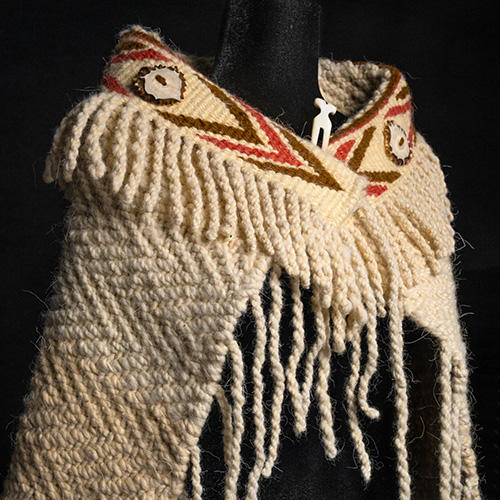The School of Drama’s Jones Playhouse dates back to 1931, when Florence and Burton James had the space remodeled from a tile warehouse to a performance venue, the Seattle Repertory Playhouse. It has since been one of the nation’s oldest historic theatre buildings in continuous use.
The Jameses envisioned the Seattle Repertory Playhouse as a “civic” theatre, with emphasis on outreach. At one point, the Playhouse had the largest theatre education program in the country, ultimately touring plays by Shakespeare to more than 70,000 high school students throughout the state. The theatre’s puppet shows, presented every Saturday morning in coordination with Seattle’s Junior League, were another popular offering.

“The Jameses worked very hard to make that theatre part of the community,” says Barry Witham, professor emeritus of drama. “They also had a very progressive agenda, which eventually caused them to have problems in the community.”
That agenda can be gleaned from their productions. In 1936, as part of the Work Progress Administration's (WPA) Federal Theatre Project, the theatre housed one of the few Negro Theatre Units in the country. The plays performed by this unit, some written by black playwrights, were known for regularly attacking existing racial stereotypes. “It was one of the first places where black and white actors were on the same stage in the same play—and that was absolutely revolutionary at the time,” says Sarah Nash Gates, director of the School of Drama.
The Jameses also took on other controversial topics. They presented a pro-union play, Stevedore, during a Longshoreman’s strike, and produced Russian plays despite a growing anti-communist sentiment. These actions led the Jameses and co-founder Albert Ottenheimer to be investigated for un-American activities by the Canwell Committee in 1948. The theatre did not recover, and in 1950, the UW purchased the building as an experimental laboratory theatre, with the School of Drama’s Glenn Hughes spearheading the purchase.
“The story of that purchase tends to be told rather melodramatically, with the Jameses as the good guys and Glenn Hughes as the bad guy, but it’s much more nuanced,” says Witham. “At the time, the Seattle Repertory Playhouse, like many others, was struggling. The Jameses were treated very badly by the Canwell Committee, but the University’s acquisition of the building was a good, sensible decision for them and the School of Drama.”

The building was renovated in 1967 under the leadership of then-director Greg Falls, with the original proscenium stage replaced by a thrust stage, reflecting changing aesthetics in theatre design.
“After World War II, it became more popular to have thrust stages, to move the theatre playing areas into the space with the audience,” says Witham. But, he adds, the Playhouse’s design could not accommodate a true thrust stage with audience seating on three sides. “It was something of a compromise, with most of the audience still in the middle.”
Now the Playhouse Theatre—renamed the Jones Playhouse—is entering a new phase. The 2009 renovation provides the infrastructure to take advantage of technological advances, current and future, well into the 21st century. “We didn’t want a fancy building,” says Anne Stewart, general manager for production at the School of Drama and Drama’s project manager for the Jones Playhouse. “We wanted…(to) put the money toward infrastructure. We want to be sure the building will still be usable in 30 or 40 years.”
More Stories

A Healing Heart Returns
In February, the UW Symphony will perform a symphony that Coast Salish elder Vi Hilbert commissioned years ago to heal the world after the heartbreak of 9/11. The symphony was first performed by the Seattle Symphony in 2006.

Need a break from holiday movies? Try these
For those wanting a break from holiday movies, Cinema & Media Studies faculty and grad students offer suggestions.

Coast Salish Traditions are "Woven in Wool" at the Burke
A Burke Museum exhibit, co-curated by Coast Salish weavers and Burke curators, highlights the importance of weaving to Coast Salish communities.